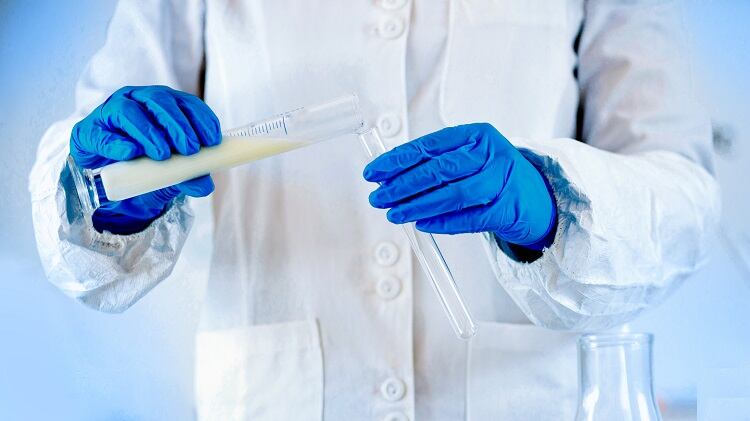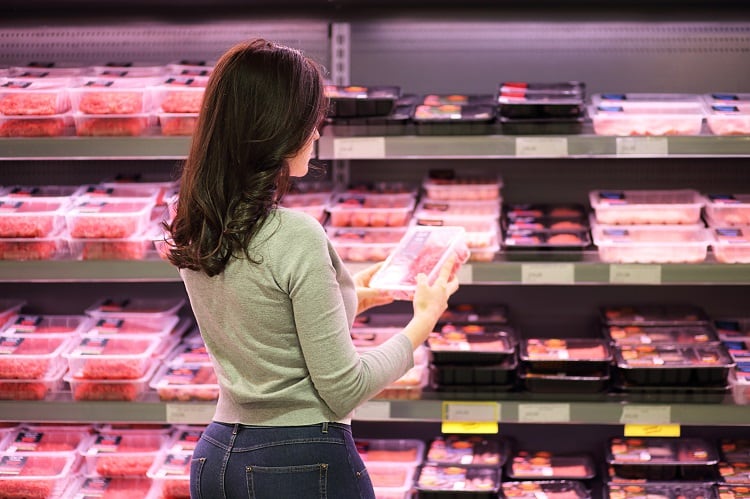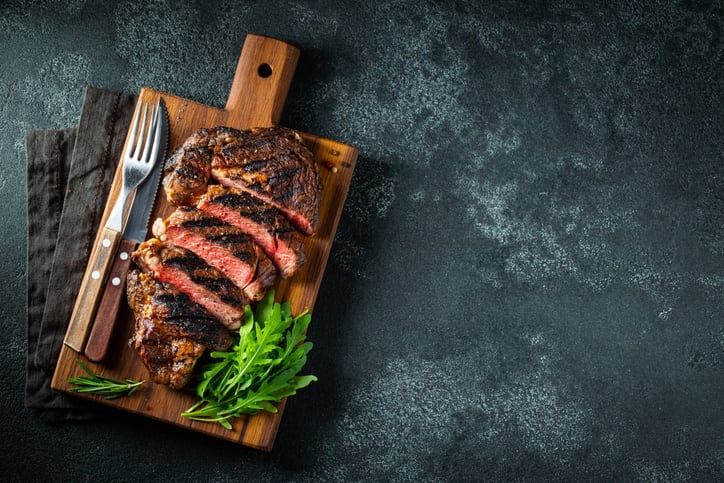The recently-approved research project has been coined Arrival of Cellular Agriculture-Enabling Biotechnology for Future Food Production, or ARRIVAL for short.
It will be funded by the Research Council of Norway, a government agency with an annual budget of NOK20m (€2m), and headed up by the Norwegian Institute of Food, Fisheries and Aquaculture Research (Nofima).
Other participants include contract research organisation SINTEF Industry, Oslo Metropolitan University, the Norwegian Institute for Rural Research (Ruralis), the Norwegian Board of Technology, agricultural cooperative Nortura AS and its subsidiary Norilia AS, and Norwegian dairy giant, TINE AS.
The project will officially kick off in 2023 and run for five years until 2027, with the goal of developing cell-based agriculture technology as a means of producing the ‘food of the future’.
Investigating technological and societal possibilities and challenges, including how willing Norwegians are to try food grown in a lab, are also priorities for the research group.
Precision fermentation-derived egg and milk proteins
Nofima already has work underway on cell-based agriculture via its strategic research programme titled Precision. This project, which runs from 2021 to 2025, is funded by the Foundation for Research Levy on Agricultural Products.
Like Nofima’s work under Precision, the results of ARRIVAL will also be openly accessible.
“In simple terms, there are two types of cell-based agriculture: lab-cultivated meat and precision fermentation,” explained ARRIVAL lead Sissel Rønning. “In the ARRIVAL project, we will use both methods to produce milk, eggs, and meat proteins.”
Precision fermentation enables the programming of microorganisms, such as yeast, to produce complex organic molecules such as protein. Under the ARRIVAL programme, the scientists plan to leverage this technology to produce edible proteins like egg white and milk proteins.

That is not to say that dairy and egg industries are lagging. In fact, the number of laying hens and dairy cows has increased in recent years in Norway.
According to Statista, in 2021 there were around 4.18m laying hens in Norway. The average number of dairy cows per farm has been constantly increasing over the last 10 years, with preliminary figures for 2021 suggesting there were about 215,000 dairy cows on Norwegian farms.
But from an environmental sustainability perspective, precision fermentation-derived alternatives appear to come out on top.
Egg white is a key protein ingredient for the food industry. According to research conducted by the University of Helsinki and VTT Technical Research Centre of Finland, precision-fermentation derived ovalbumin can reduce land use by almost 90% and greenhouse gas emissions by 31-55%.
For dairy too, environmental statistics favour proteins grown in a lab. US-headquartered Perfect Day, which produces animal-free whey, claims its production process reduces water use by up to 99%, emits up to 97% less greenhouse gas emissions, and uses up to 60% less non-renewable energy compared to conventional production methods.
Cell-based meat fed on new, sustainable growth media
The other area of cellular agriculture to be investigated under the ARRIVAL project is the production of cell-cultivated meat.
Nofima first instigated research into lab-grown meat in 2018, around five years after the first cell-based meat was produced by Mark Post at Maastricht University, the Netherlands.
The Nofima project, similarly headed up by Rønning and funded by the Research Council of Norway, was the first openly accessible research project in this area. Its goal was to develop new technology to cultivate muscle cells from bovine and to use residual biomass from the food industry as a growth medium for the cells.
Sissel and colleagues have successfully cultivated small pieces of meat and according to Nofima, the institute’s knowledge into the use of residual biomass as food for the muscle cells has developed ‘significantly’.
Under ARRIVAL, the scientists will continue their work in this area. “We will continue our research on how to scale up cell-based meat production and find out more about which materials are suitable to use as a framework for the muscle cells,” explained Rønning.
“Muscle cells are picky, and it is usual to use a growth medium made from parts of calf blood in current production.
“This production is not very sustainable, and many people are therefore critical of this type of protein cultivation. To successfully scale these types of technologies, new, sustainable growth media must therefore be developed.”
Based upon their findings to date, Nofima researchers suggest residual biomass from chicken, slaughter blood, eggshell membranes, and egg white may be suitable.
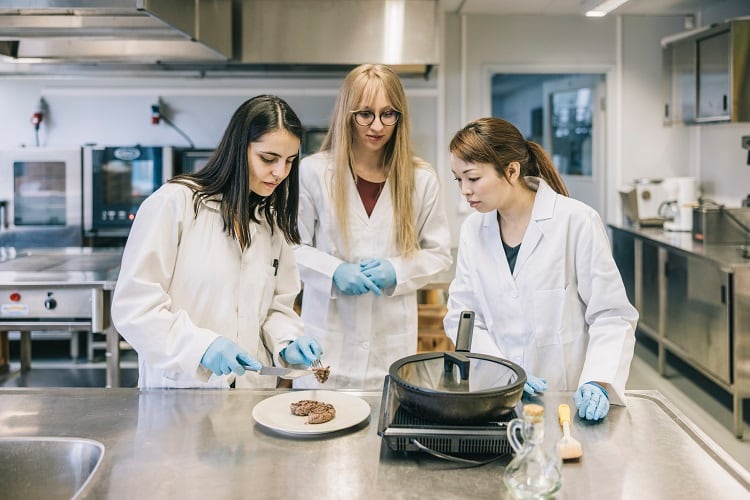
In Norway, meat production grew 3.7% between 2020 and 2021, according to Statistics Norway. In saying that, meat consumption is lower there than in other comparable Northern European countries, and according to recent Nofima research, reduced meat-eating is observed among young, urban consumers.
At the same time, the researchers note that Norwegian consumers are not worried about animal welfare in local production, nor ‘highly driven’ by environmental motives for reducing their consumption.
Sissel sees cellular agriculture-derived food production as an opportunity to develop Norwegian industry in a ‘new direction’.
“This type of food production can take place anywhere, pressure on arable land decreases, [and] surplus material such as residual biomass and excess heat from other industries can be utilised…
“We can increase self-sufficiency in food in Norway, and we do not have to kill animals to produce the necessary protein in the form of meat. In Norway, we have both the expertise and the money needed to develop new technical solutions for food production.”
Are consumers ready for lab-grown foods?
Precision fermentation has been used in pharmaceuticals for years, for example in the production of non-animal insulin. However, when used for food production, volumes must be significantly greater.
Nofima understands, therefore, that the raw materials must be affordable in order to compete with other traditional sources of protein – for example, soy – when it comes to price. And of course, they must be sustainable.
The scientists want to test residual biomass sources such as bean starch, oat starch, and egg white as input factors in the new protein sources.
“Cell-based agriculture is a revolution in food production that can change agricultural production and ownership, land use, policy design, eating habits, and ethical issues,” said Rønning. “In the ARRIVAL project, we will take the research on cell-based agriculture several steps further.
“We want to implement new protein sources into existing food products and prepare society, consumers, and the food industry for the possible consequences of this radical shift in the way food is made.”
So what do consumers think about eating lab-grown meat, or fermentation-derived milk and eggs?
Surveys investigating consumer perception and acceptance of these new protein sources suggest varying opinions, depending on the region.
Back in 2020, a study out of Australia revealed 72% of consumers are not willing to accept lab-grown meat. Earlier research suggested consumers in Europe are less likely to accept cell-cultivated meat compared to those in the US.
Another 2020 study investigating perceptions in France and Germany revealed that although awareness of cell-based meat in both countries of low, 44% of French and 58% of German respondents said they would be willing to try cultured meat.
Just this month, the UK’s Food Standards Agency (FSA) released findings from a survey indicating that 21% of survey participants in England, Wales, and Northern Ireland would not be willing to try lab-grown meat. Thirty-eight percent said they would definitely not like to eat it.

In the precision-fermentation dairy space, German start-up Formo – which produces precision fermentation-derived cheese – has conducted its own research. Surveying consumers from the UK, Germany, Singapore, and the US on how they react to the general concept of precision fermentation revealed that ‘many’ indicated they would want to try the product to compare it to conventional dairy.
At the same time, participants were wary about ‘meddling with nature’. “As much as I like innovation, as much as possible natural is best, you know?” responded a 25-year-old participant from Singapore.
Nofima acknowledges the scepticism. “Among consumers, there is a general, emotional-based scepticism probably related to the fact that it feels unnatural, such as messing about with creating playing god, and not respecting nature for what it is, as well as not knowing the range of possible future consequences. A kind of Frankenstein meat.”
On the other hand, ‘quite a lot’ of consumers are positive, the Norwegian institute continued. “They often highlight animal welfare and sustainable food production as essential arguments.”
In order to increase acceptance of lab-grown food, Nofima understands it is ‘crucial’ to provide consumers with knowledge about how production takes place and how new technologies can lead to ‘healthier’ food products.
Scientists involved in the ARRIVAL project will focus on Norwegian consumers in regard to what they think, and what qualities they want ‘new food products’ to have.
Morals and ethics: Who should own the knowledge?
According to Nofima, several ethical ‘dilemmas’ related to lab-cultivated food exist. The ARRIVAL team will work with Norwegian research communities to help shed light on these issues.
Examples could include the technology’s ‘reshaping’ of nature, its power to influence food culture, the production of traditional foods and knowledge associated with that production. Other concerns might focus on jobs, rural development, and business development, as well as who should own the knowledge and make money from it.
A big one is undoubtedly whether lab-cultivated food is more sustainable than food produced using methods such as regenerative agriculture.
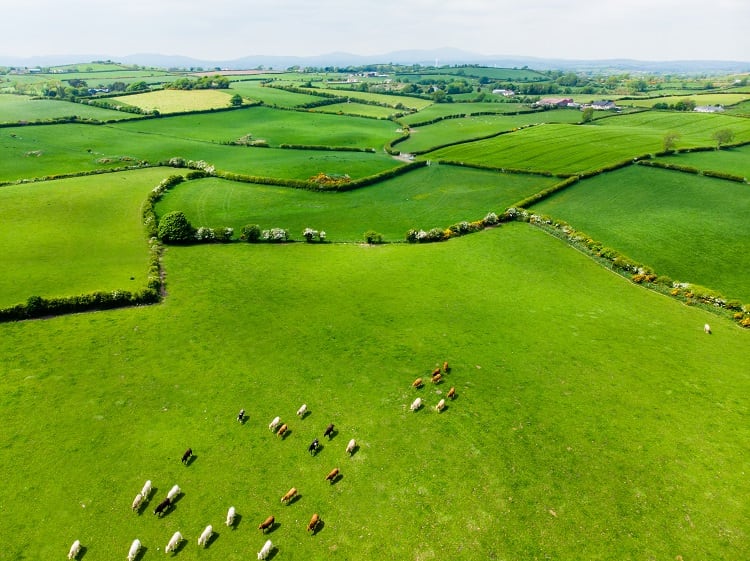
As to whether Nofima and ARRIVAL partners will own the knowledge gained throughout the project, Rønning explained a ‘main principle’ of the project is that results will be made available to both the industry and public.
However, this does not apply to results that relate to company-sensitive information from one or several of the industry partners in the project, she told this publication.
In response to whether there is scope for Nofima to license out technology or results originating from the project, the researcher confirmed there are ‘no legal limitations’. However, it would require that the ownership of the relevant IP-rights had been clarified and that the owner of the said rights wished to license out the IP.
“Nofima is fundamentally positive about doing so, as this enables us – as an applied research centre – to continue to the sustainable development of food producing industries.”
Sources:
Nature Food
‘Ovalbumin production using Trichoderma reesei culture and low-carbon energy could mitigate the environmental impacts of chicken-egg-derived ovalbumin’
Published 16 December 2021
DOI: https://doi.org/10.1038/s43016-021-00418-2
Authors: Natasha Järviö, Tuure Parviainen, Netta-Leena Maljanen, Yumi Kobayashi, Lauri Kujanpää, Dilek Ercili-Cura, Christopher P. Landowski, Toni Ryynänen. Emilia Nordlund & Hanna L. Tuomisto.
Meat Science
‘Meat consumption and consumer attitudes – A Norwegian perspective’
Published online 19 July 2022
DOI: https://doi.org/10.1016/j.meatsci.2022.108920
Authors: Øydis Ueland, Rune Rødbotten, Paula Varela.


